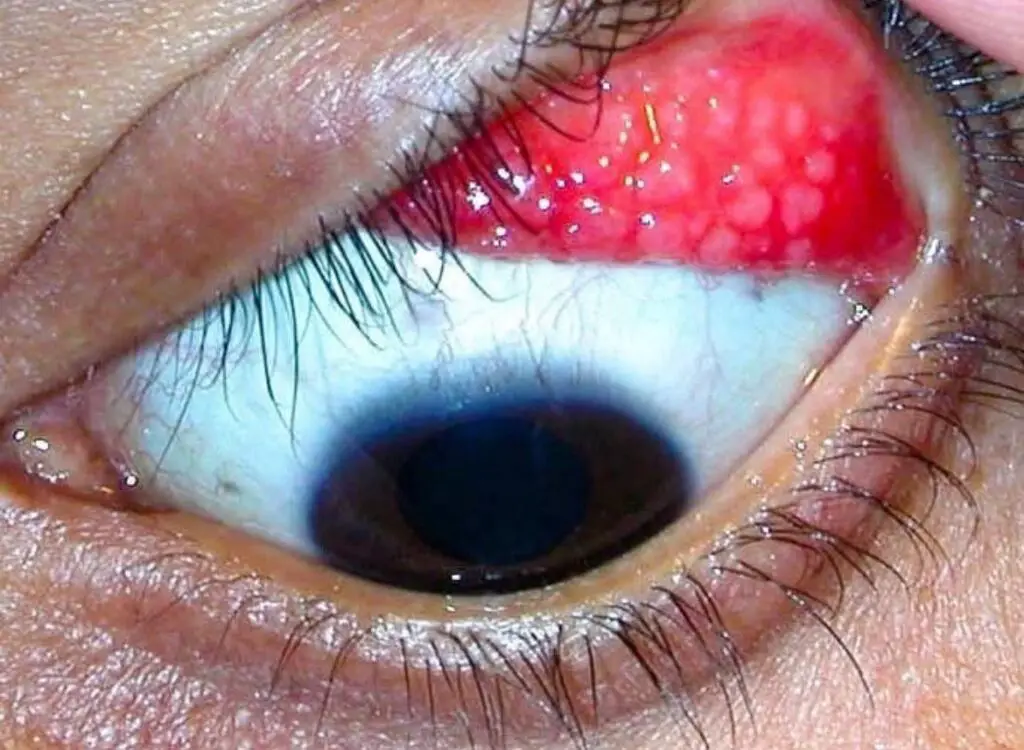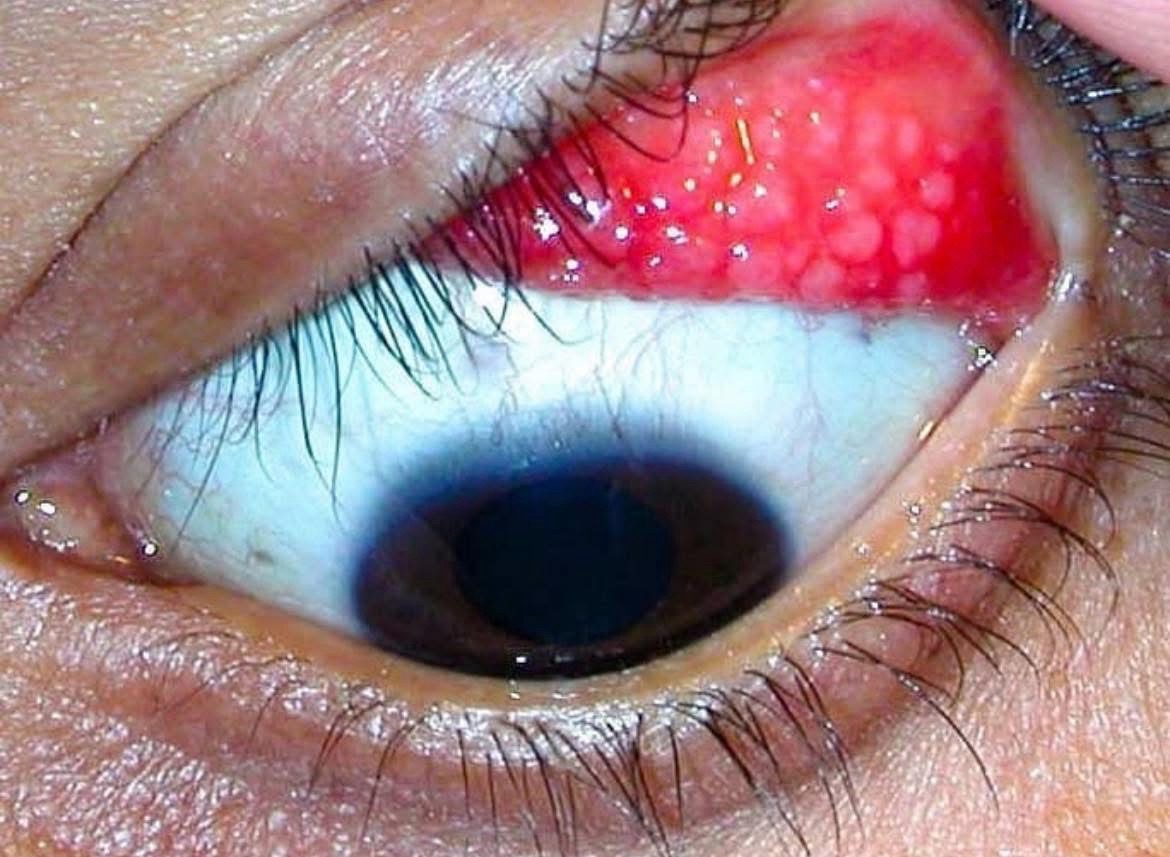Giant Papillary Conjunctivitis (GPC): Clinical Features, Causes, and Optometric Management
Meta description: Read about Giant Papillary Conjunctivitis (GPC), its causes, clinical signs, symptoms, and evidence-based management strategies from an optometrist’s perspective.

Giant Papillary Conjunctivitis (GPC) is a chronic inflammatory condition of the superior tarsal conjunctiva, most commonly associated with contact lens wear. Although the condition does not threaten vision directly, it often results in significant discomfort, lens intolerance, and discontinuation of contact lens wear. For optometrists, recognizing and managing GPC is essential for ensuring long-term success with contact lenses and maintaining patient comfort.
What is Giant Papillary Conjunctivitis (GPC)?
GPC is characterized by the development of giant papillae (≥0.3 mm) on the upper tarsal conjunctiva. It results from a mechanical and immunologic response to chronic irritation, most frequently caused by contact lenses, though it can also occur with ocular prostheses, exposed sutures, or scleral buckles.
Papillae: Elevated, flat-topped nodules containing central vascular cores. Location: Superior tarsal conjunctiva (best seen on lid eversion). Nature: Inflammatory but not infectious.
Etiology and Risk Factors
The development of GPC is multifactorial, involving both mechanical irritation and hypersensitivity reactions.
Common Causes
Contact lenses (soft > rigid gas permeable) Deposits on lens surface act as antigens. Poor lens hygiene and extended wear increase risk. Ocular prostheses Exposed ocular sutures or scleral buckles
Contributing Factors
High protein/lipid deposition on lenses Long wearing hours Poor lens replacement schedule High water content hydrogel lenses Atopy and allergic predisposition
Clinical Features of GPC
Symptoms
Itching, especially after lens removal Mucous discharge and lens coating Increased lens movement and decentration Blurred or fluctuating vision Foreign body sensation Lens intolerance developing after months/years of wear
Signs (on slit-lamp examination)
Giant papillae ≥0.3 mm on upper tarsal conjunctiva (diagnostic hallmark) Hyperemia of the superior tarsus Stringy or ropy mucus Coated or deposited lenses Conjunctival chemosis in severe cases
Differential Diagnosis
Optometrists should distinguish GPC from other ocular surface conditions:
Allergic conjunctivitis: Diffuse bulbar hyperemia and itching, without giant papillae. Vernal keratoconjunctivitis (VKC): Larger cobblestone papillae and limbal involvement, often in children/young males. Bacterial conjunctivitis: Mucopurulent discharge and acute onset, not chronic papillae.
Diagnosis
Diagnosis is clinical, based on:
History: Long-term contact lens wear, recent intolerance, or ocular prosthesis. Examination: Upper lid eversion with slit-lamp biomicroscopy. Lens inspection: Presence of deposits or excessive mucus.
Management of GPC
1. Contact Lens Modification
Discontinue lens wear temporarily to allow resolution. Switch from hydrogel to silicone hydrogel or rigid lenses. Reduce wearing time. Daily disposable lenses are strongly recommended. Improve lens care solutions and cleaning regimens.
2. Pharmacological Therapy
Topical mast cell stabilizers (e.g., sodium cromoglycate) for long-term control. Topical antihistamines (e.g., olopatadine) for symptomatic relief. Topical corticosteroids (short course, if severe and unresponsive).
3. Supportive Care
Cold compresses and lubricating drops. Patient education on lens hygiene and replacement schedules.
Prognosis
With proper management, GPC is reversible and patients can often resume contact lens wear with modifications. Early detection and intervention are key to preventing permanent dropout from lens use.
Key Optometry Pearl
Always evert the upper eyelid in contact lens wearers who present with itching, mucus discharge, or sudden lens intolerance. Early recognition of giant papillae is the cornerstone of diagnosing GPC.
Conclusion
Giant Papillary Conjunctivitis remains one of the most common reasons for contact lens intolerance. For optometrists, understanding its etiology, clinical signs, and management options is vital for ensuring long-term patient comfort and contact lens success. By combining lens modification strategies with appropriate pharmacological support, GPC can be effectively managed, allowing patients to continue benefiting from contact lenses without compromising ocular health.
Discover more from An Eye Care Blog
Subscribe to get the latest posts sent to your email.


You must be logged in to post a comment.